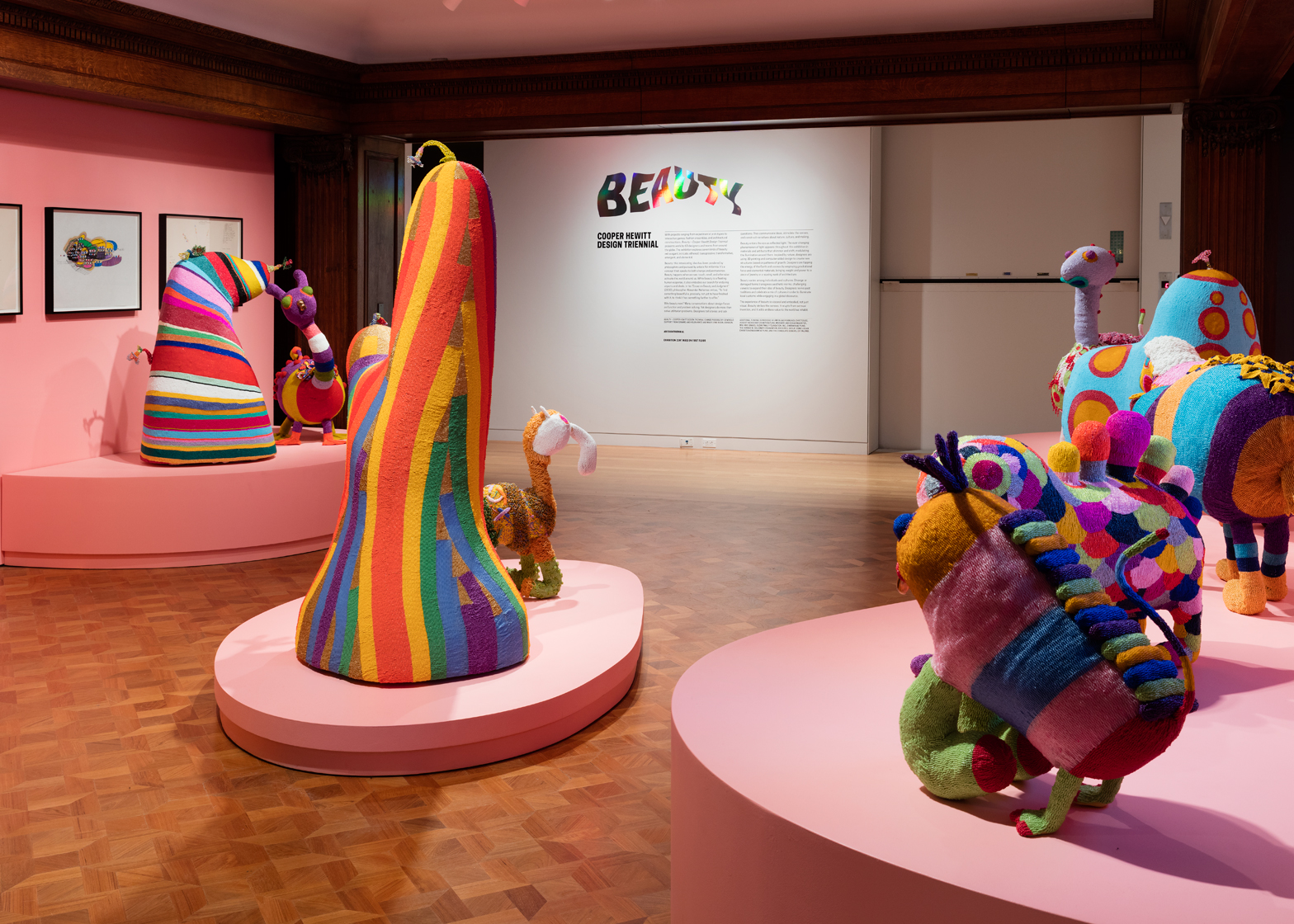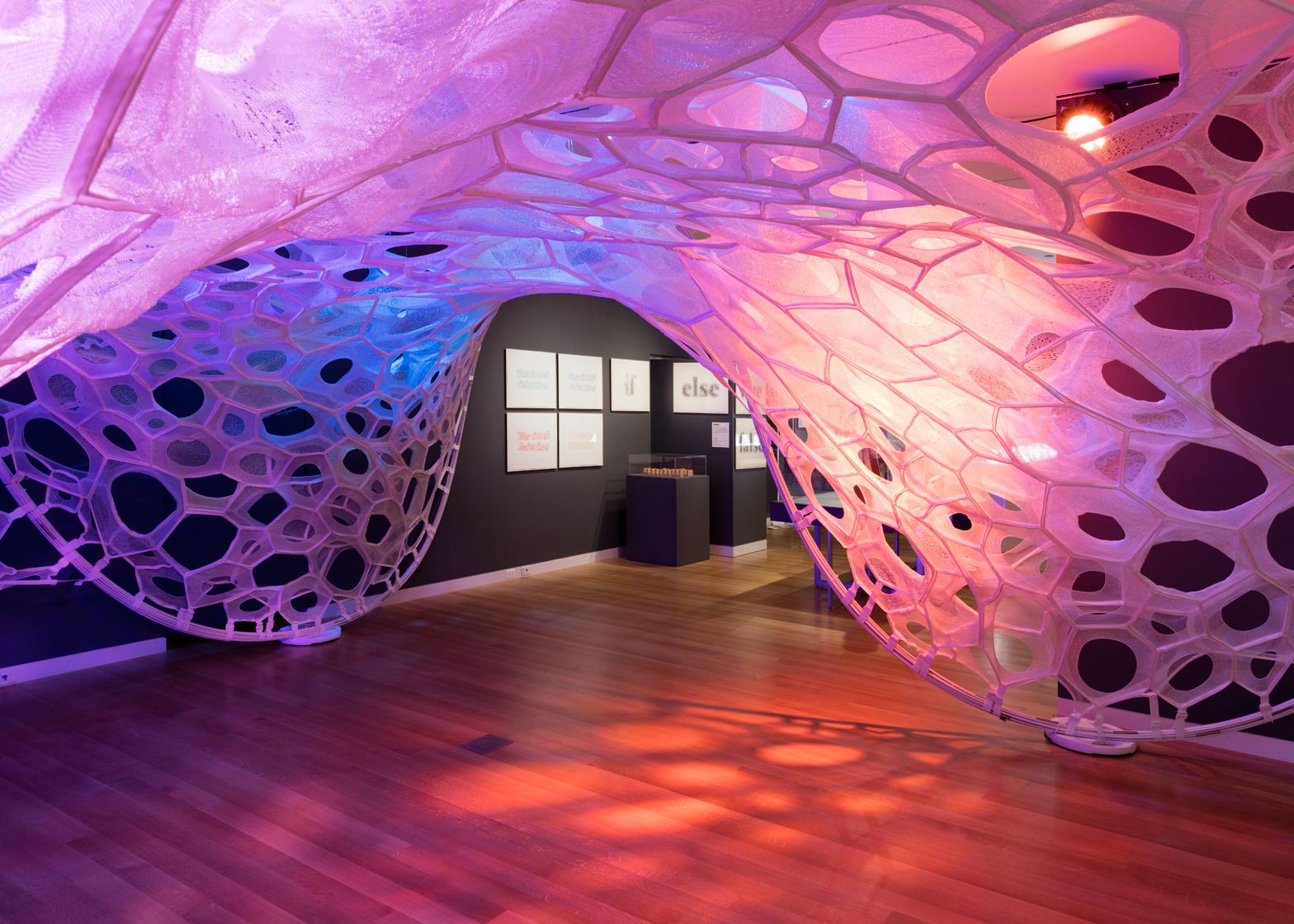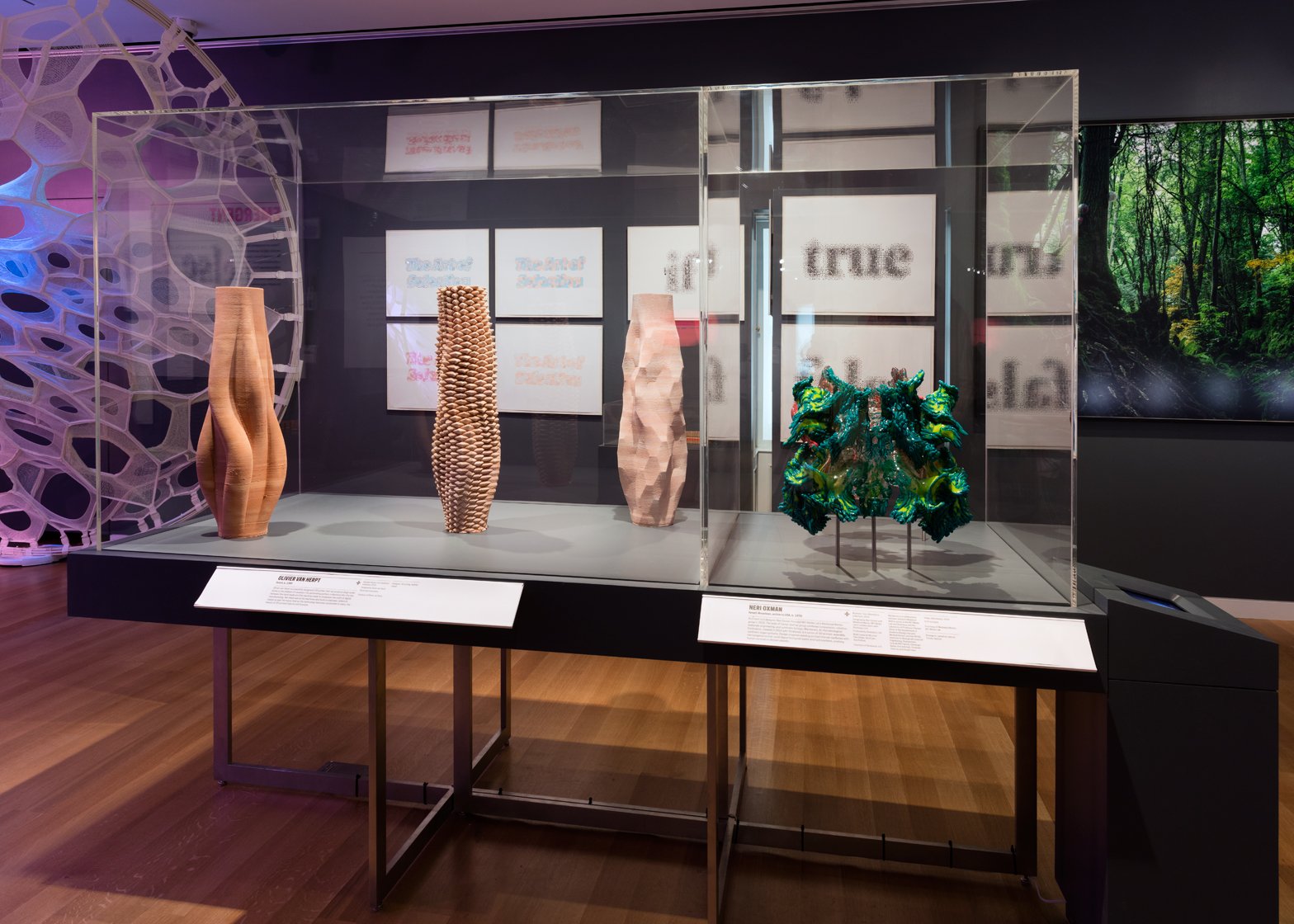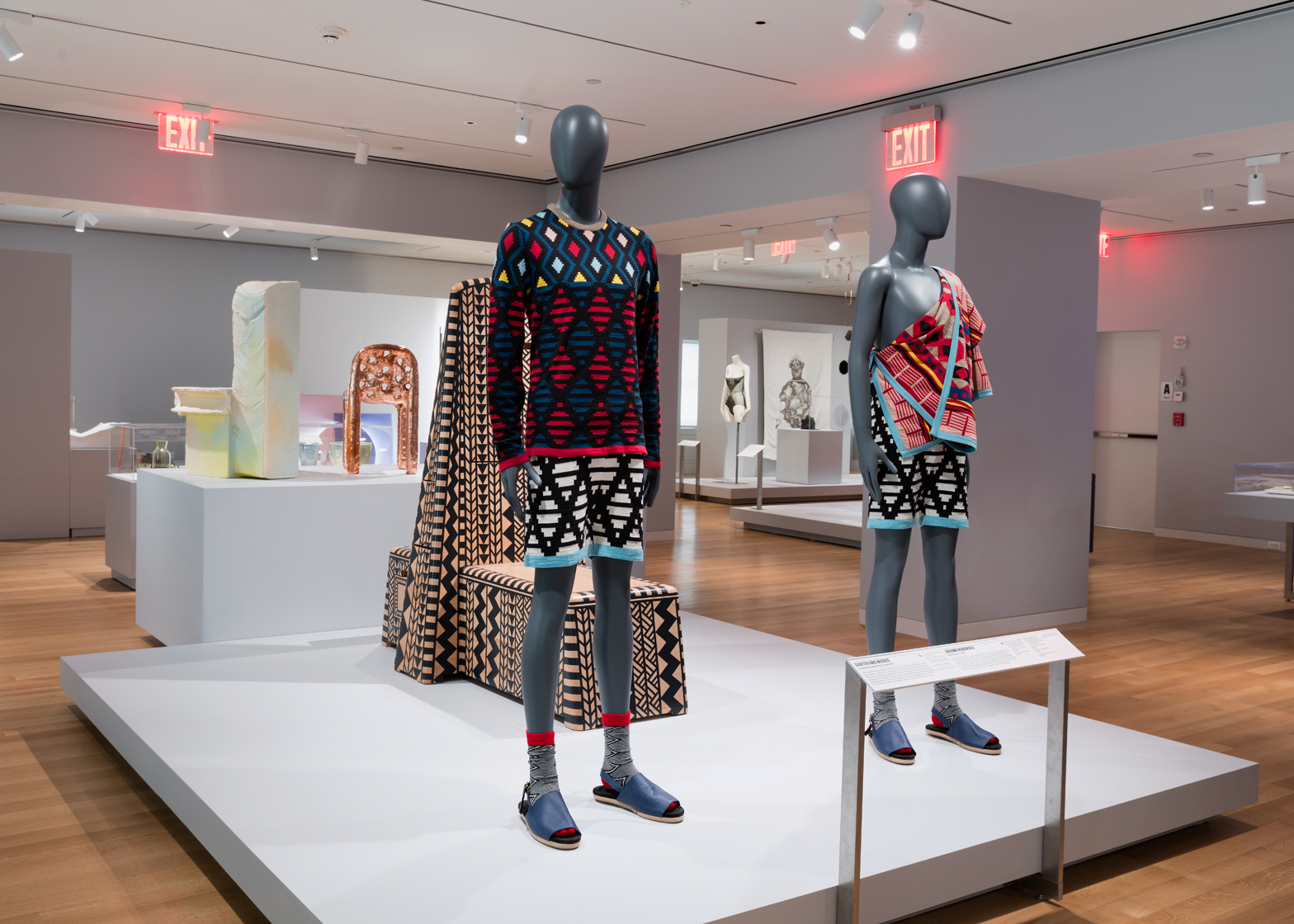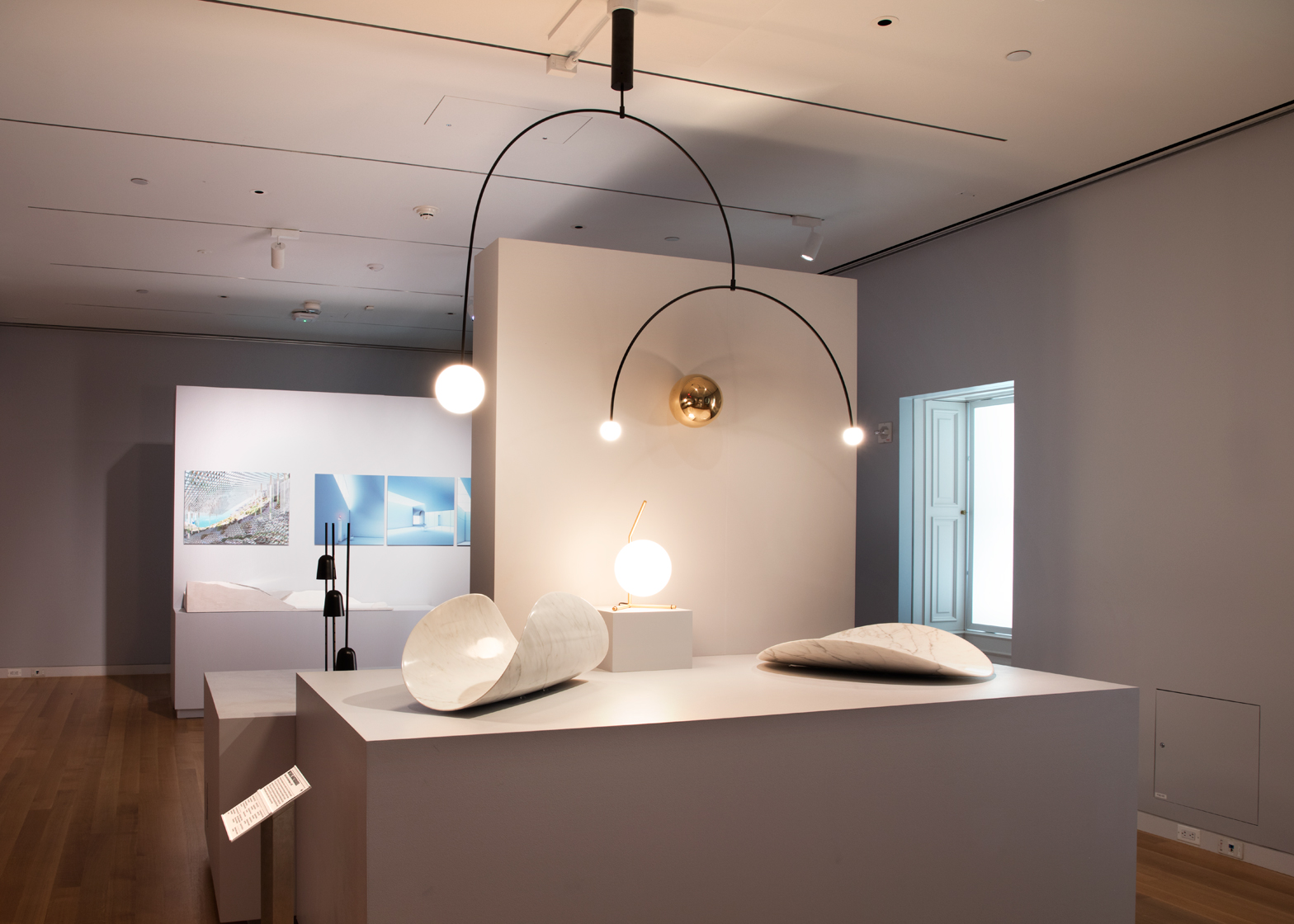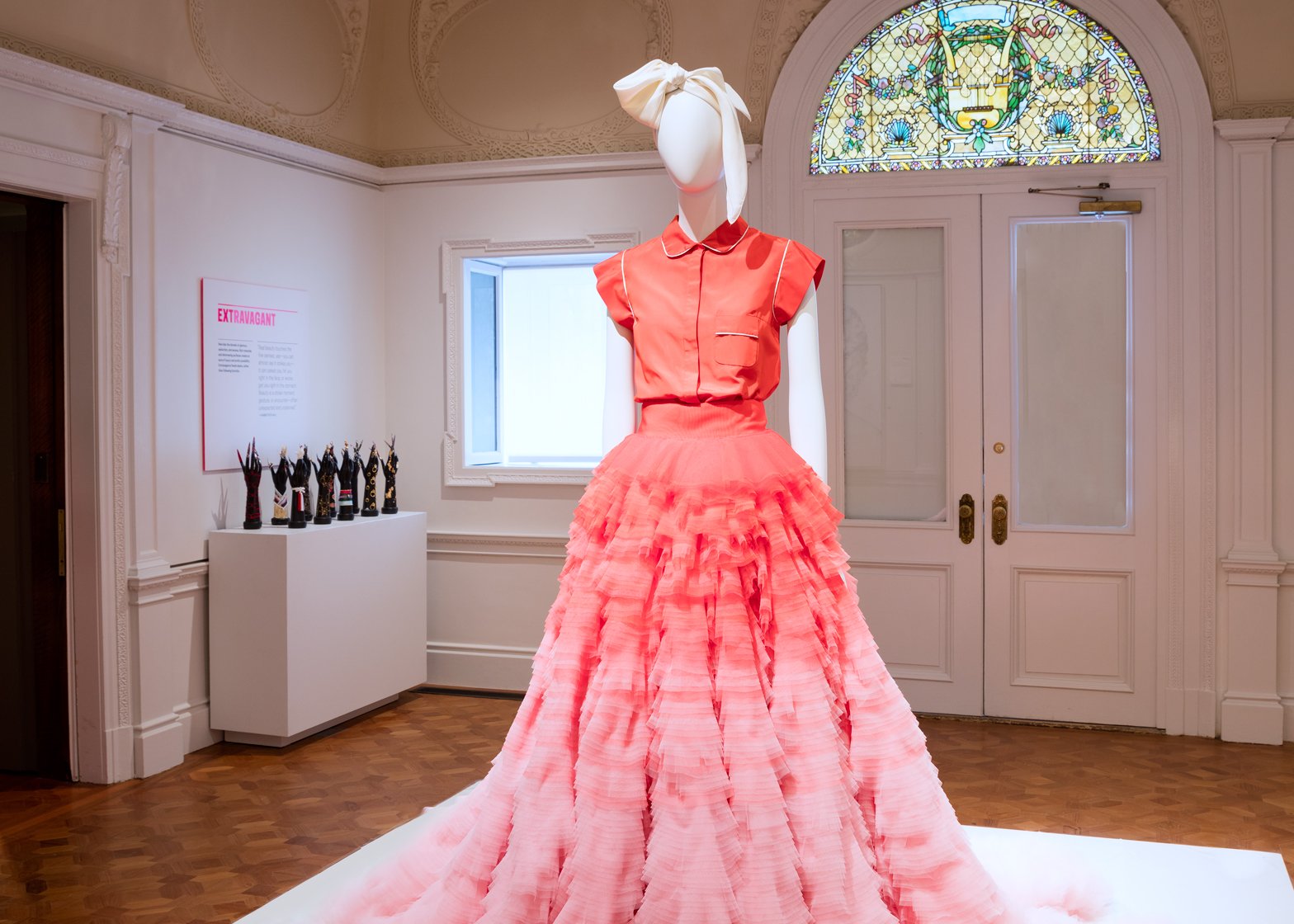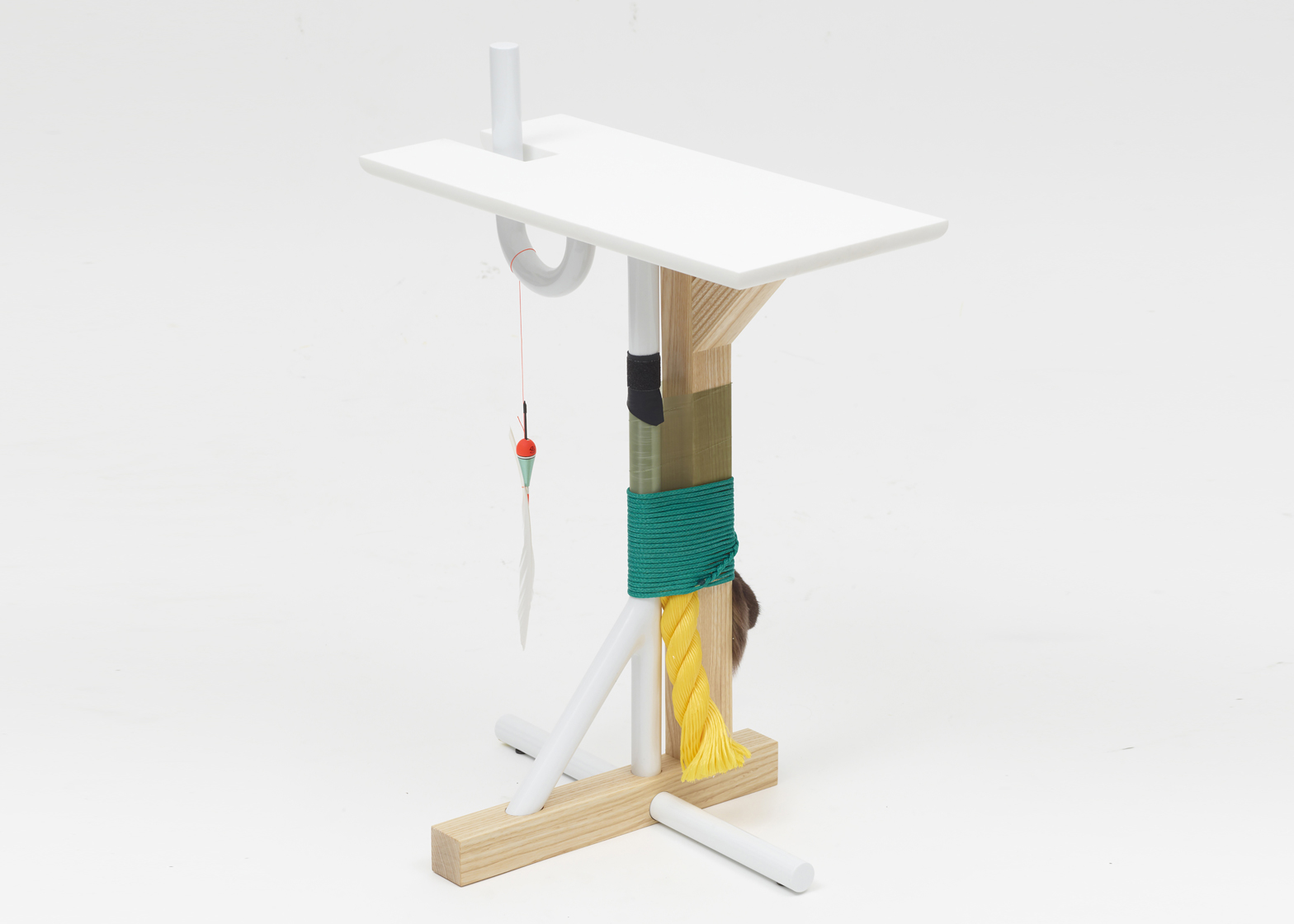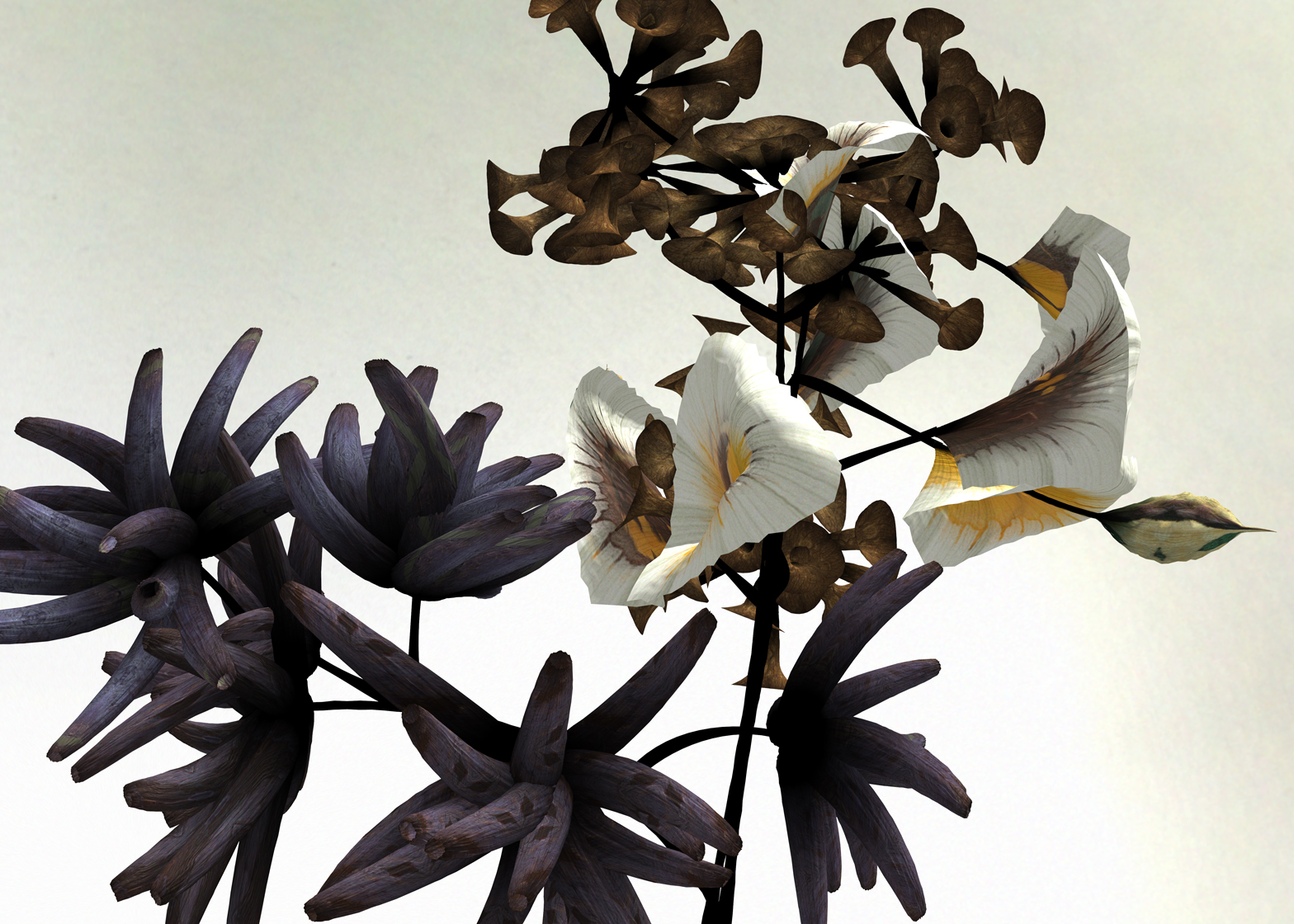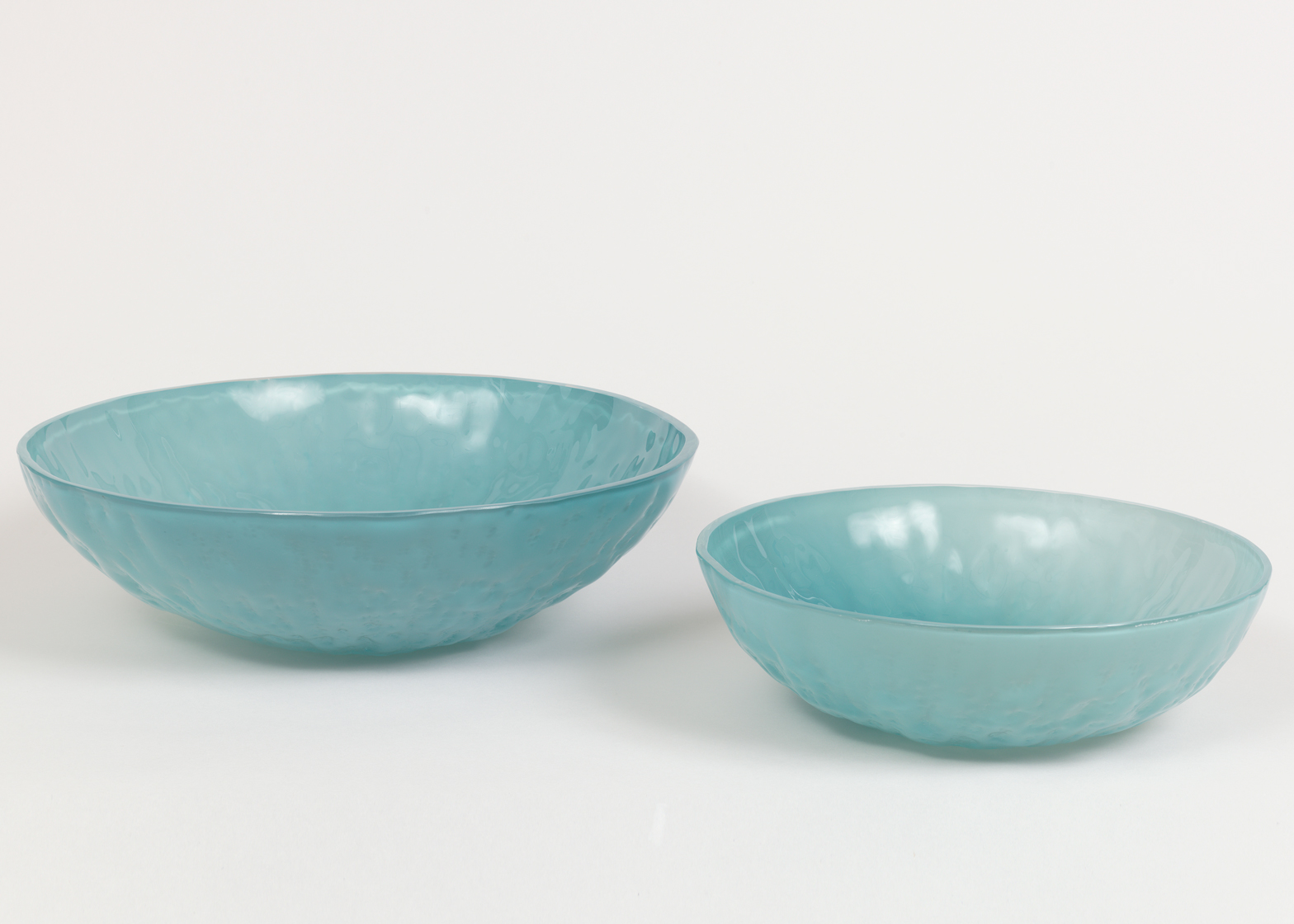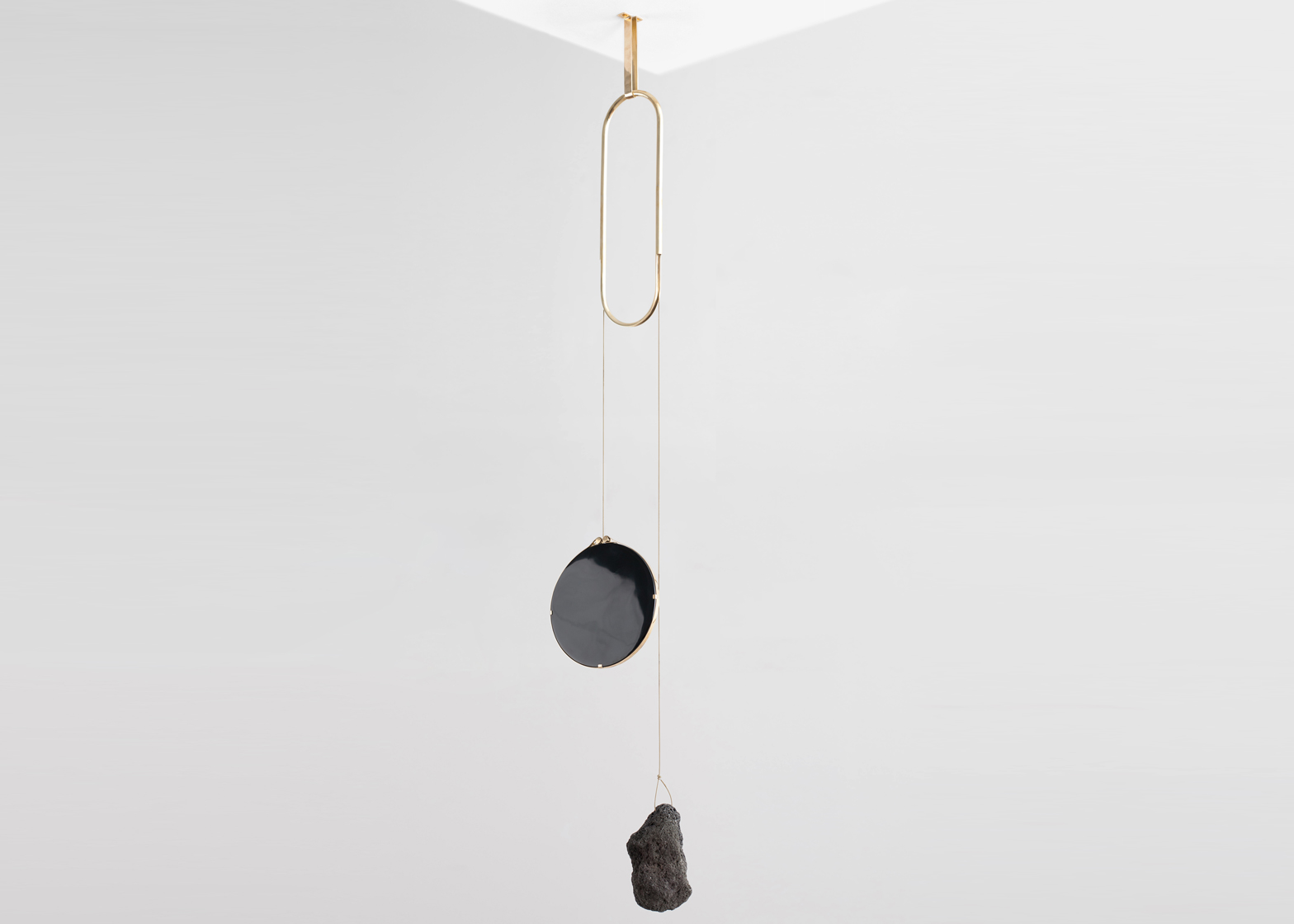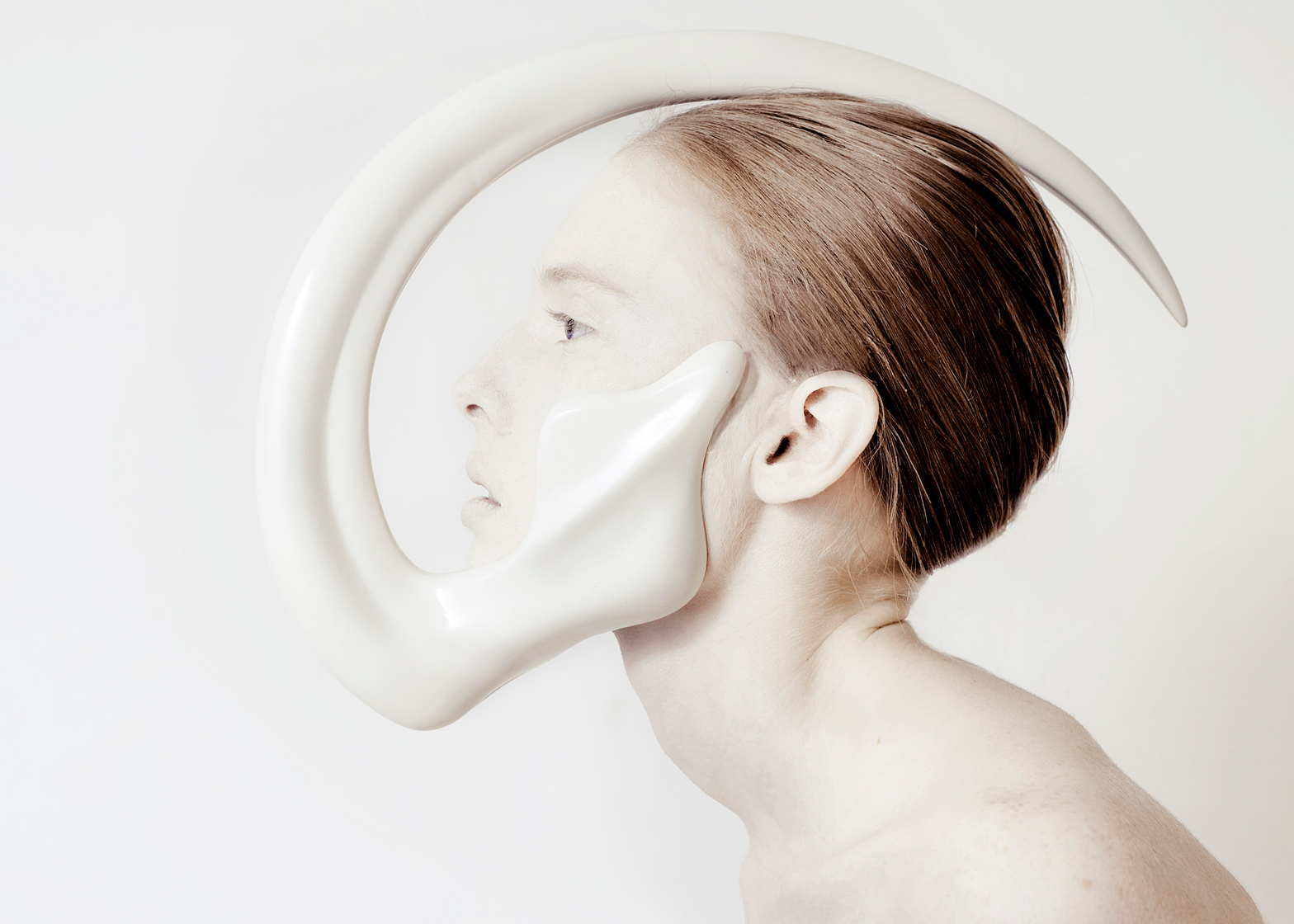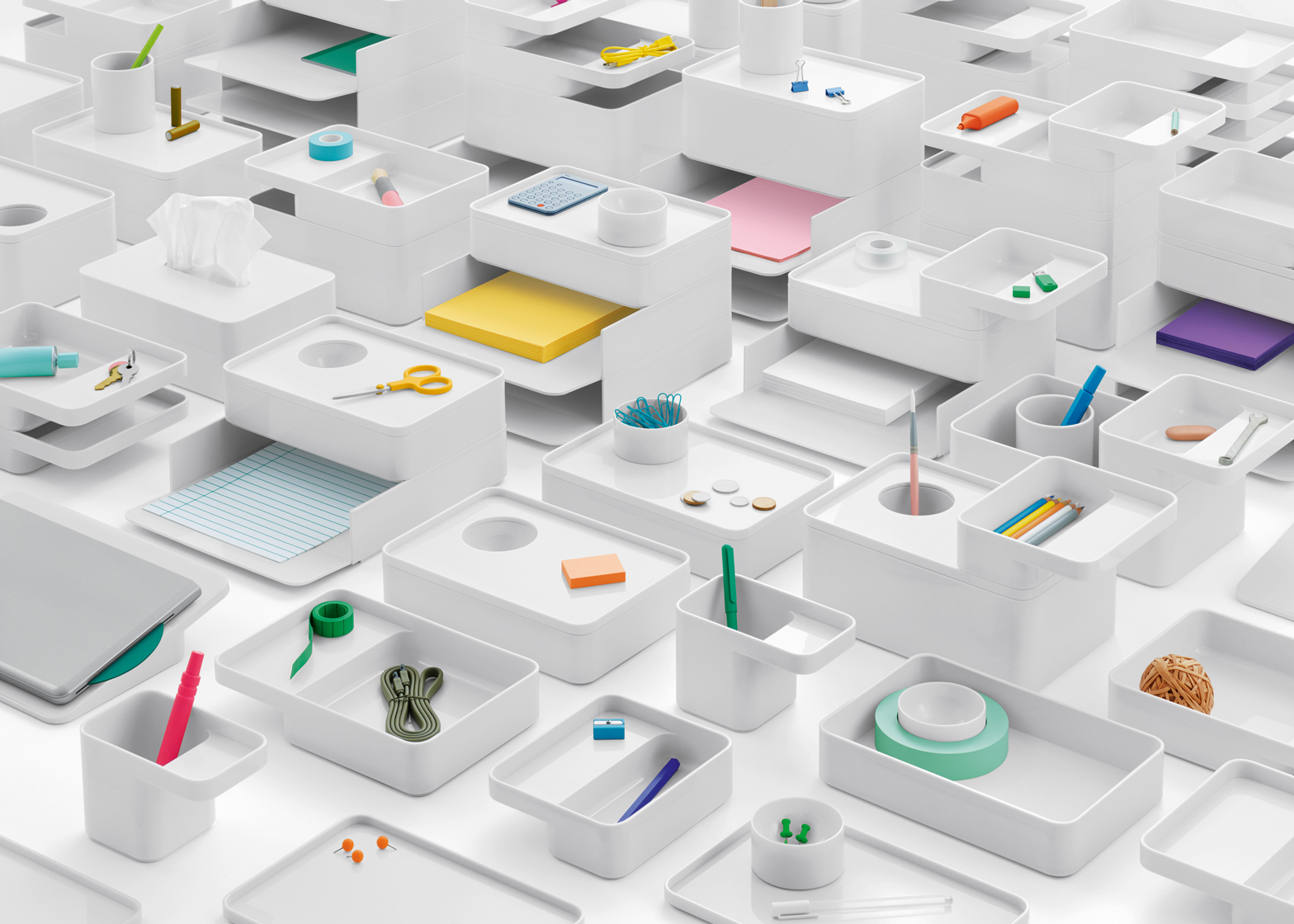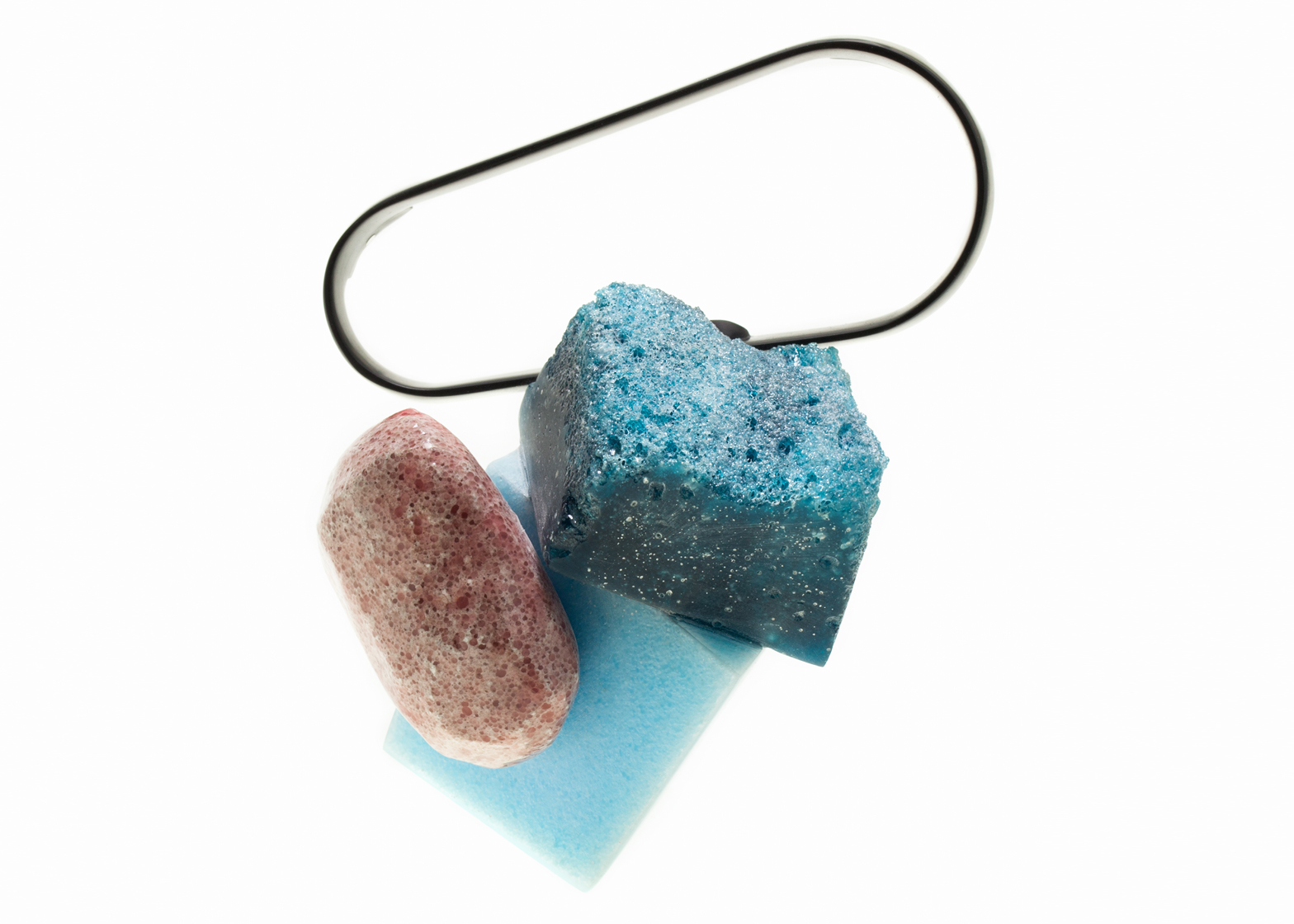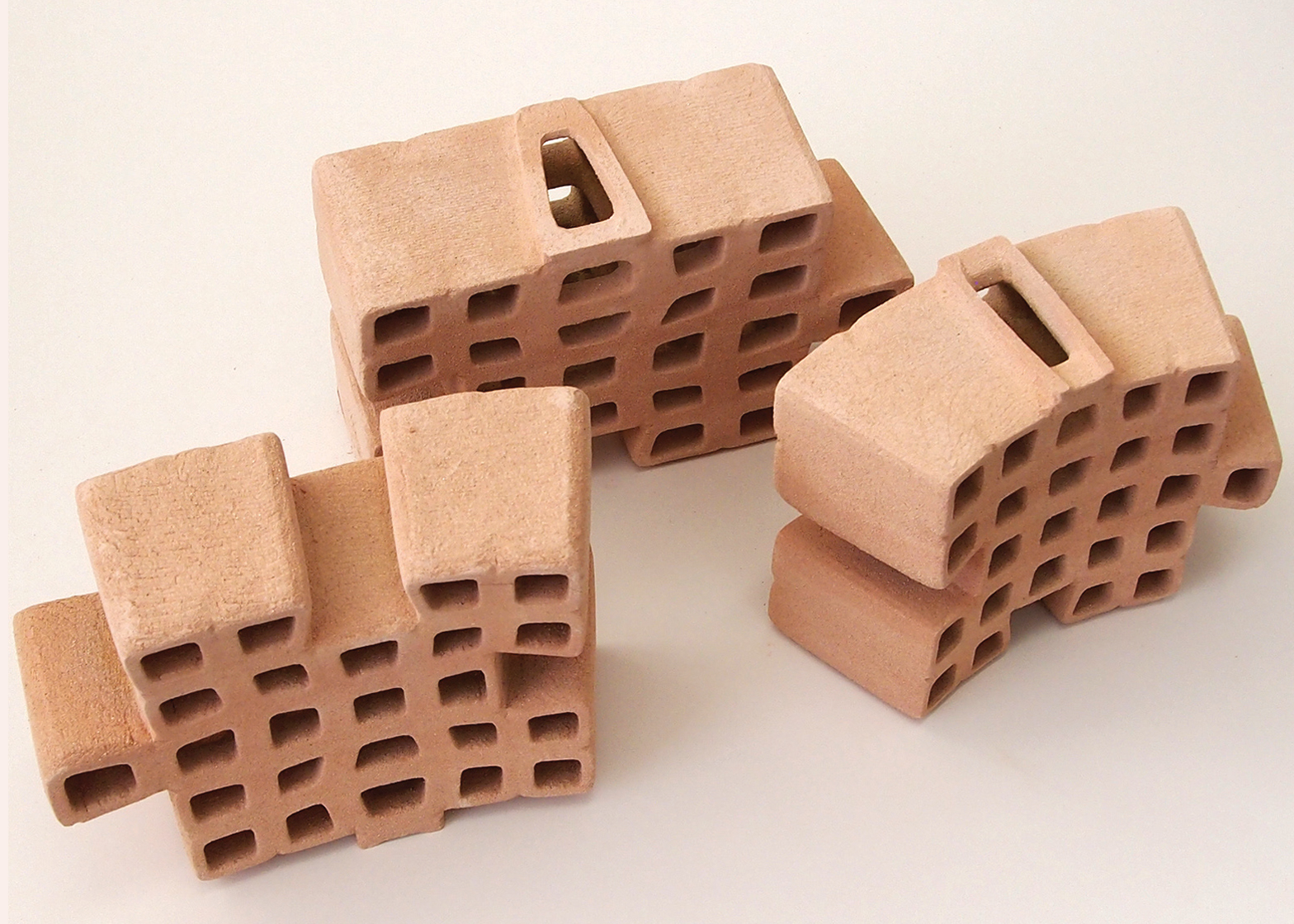The Cooper Hewitt Smithsonian Design Museum's fifth Design Triennial exhibition in New York examines the theme of beauty in contemporary design (+ slideshow).
Featuring more than 250 pieces by 63 designers and artists, Beauty aims to offer a broad look at contemporary ideas of beauty.
The exhibition opened to the public today.
"Beauty will expand the discourse around the transformative power of aesthetic innovation," said Caroline Baumann, director of the Cooper Hewitt.
"The exhibition will celebrate design as a creative endeavor that engages the mind, body and senses with works of astonishing form and surprising function."
The show includes objects, furniture pieces, installations, fashion items, graphic design projects, and multimedia works grouped into categories titled Extravagant, Intricate, Ethereal, Transgressive, Emergent, Elemental, and Transformative.
"We hope that these seven concepts, like the seven colours of the rainbow or John Ruskin's seven 'lamps of architecture' will illuminate a diverse spectrum of contemporary design practice," said exhibition curators Andrea Lipps and Ellen Lupton.
"Such works tell stories and ask questions. They tease the mind and please the senses by manipulating surface, structure, materials, and ideas," they added.
Highlights from the Extravagant section include brightly-coloured gowns by Italian fashion designer Giambattista Valli and elaborate hairstyles by British hairstylist Guido Palau.
Intricate includes wallpapers by Belgium based art and design duo Studio Job and complex typography by Anglo-Scandinavian graphic design studio Non-Format.
Works by Norwegian scent artist Sissel Tolass and a timepiece installation by the Stockholm studio Humans Since 1982 populates the Ethereal category.
Fantastical animals by LA artists the Haas Brothers and Israeli artist Noa Zilberman's wrinkles jewellery are shown in the Transgressive section.
Wearable objects by designer and researcher Neri Oxman and knitted structures by US experimental architect Jenny Sabin use digital tools to emulate natural forms, so the curators labeled them Emergent. Also in this section is Designing for the Sixth Extinction, a project by synthetic biologist Alexandra Daisy Ginsberg, which envisions synthetic living creatures that would be released into the wild to save endangered species and clean up pollution.
Designers in the Elemental category use simple or natural materials in abstract or stripped down ways, like Amsterdam studio Formafantasma's works in lava or Mexican designer Emiliano Godoy's glass pieces, both materials that shift from liquid to solid.
Transformative includes pieces jewelry by German jeweller Jantje Fleischhut made from precious materials and found objects and South African textile and knitwear designer Laduma Ngxokolo's knitted garments designed to celebrate circumcision rituals.
The exhibition space was designed by Brooklyn architecture studio Tsao & McKown Architects.
The Cooper Hewitt's Triennial series aims to examine emerging trends and international developments in design.
For Beauty, the museum also consulted with a group of curators from around the world, including Claire Catterall in the UK, Finland's Suvi Saloniemi, Mugendi M’Rithaa from South Africa and Adélia Borges in Brazil.
The Cooper Hewitt, a branch of the Smithsonian Institution – the national museum network in the US based in Washington DC – reopened in late 2014 after a multi year renovation and expansion of its New York home.
Due to the renovation, the previous Triennial was held in 2010, with the theme "Why design now?", which examined design's role in addressing urgent societal and environmental problems.
Beauty will be on view until 21 August 2016. All of the objects in the exhibition are also viewable online on Cooper Hewitt's site.
Also on view in New York is Unpacking the Cube, a show of works by Steven Holl, Leven Betts, and Leong Leong at Manhattan's Chamber gallery until 6 March.

